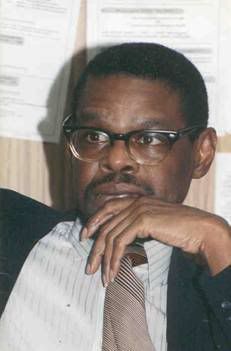The Law of Declining Returns
By Eddie Griffin
The great educator, Mrs. Hazel Harvey Peace, as she was approach the centenary milestone, described her production as “the law of declining return”. Her quip took me aback to something I had learned while studying economics. What she was essentially saying to me was that the older she got, the less she was able to do.
But then, I see the same principal at work among school teachers today. Not so much that they produce less the older they get, rather the more and harder they work the less productive the outcome.
These are two examples of the economic law of declining returns. The first, that of Mrs. Peace’s, derives from the manufacturing model of production. The second derives from a defective price model.
When a manufacturer puts a new machine into operation, theoretically the machine produces perfect parts. But gradually, as the machine wears out and becomes depreciated, it begins to produce less perfect parts and more and more scrap. At some point, the machine should be repaired, overhauled, and eventually replaced. Manufacturers who ignore this principal wind up producing their products at a higher and higher cost, until the manufacturing process is no longer profitable and the business no long sustainable.
The second example follows along the lines of a popular Tex-Mex restaurant that annually increased its customer base and sales. The strength of its cash flow allowed it to increase its credit line and expand its business to new locations. But despite increased sales, the company was losing money and had no idea as to why. An analysis showed that it was losing one-to-two cents on each sale, and the increase in sales was only aggregating the total losses.
Teachers are realizing that public schools are in a downward spiral. Academic achievement is on the decline, the dropout rate on the increase, and classroom management is growing less controllable. The solution, they perceive, is to do more, put more time in preparation, work longer hours, give more and more individual attention to each student, use more supplemental materials, and give them homework assignment.
These things they have been doing for years. But this is a case where more produces less. So, what is the problem?
To solve the problem of declining return in the first example, the business owner has to realize at what point the machine is no longer producing profitable products, at what point it needs repairs and at what point even repairs are no long viable and what the long term cost of replacement would be and could the company invest in a new machine before running out of liquidity.
To solve the problem of declining return for Poncho Restaurant chain, it simply meant raising prices on its menu, and to keep raising the prices proportionately as the cost of operation rose.
So what then about the public school system?
Our education system has evolved from the Victorian age to the mass production age to the current digital age. However, our mode of delivery has remained largely the same, and thus the classroom has been manned by the same type of school teacher, with the same type of educational background. Where once education was only for the elite, the mass production model was pyramidal, allowing only a select few to reach the top of the pyramid, while others drop out along the way, with the latter finding mediocre jobs and positions on the lower part of the food chain.
Yesterday’s teachers are not equipped for the digital age. Once they receive their degrees and teaching certificates, they pass on yesterday’s knowledge, which they previously acquired, to the next generation of student learners. Therefore, the pool of knowledge becomes stagnate over time, and antiquated in the long run.
When new technology is introduced into the class, old school teachers are faced with a new learning curve to climb. And, like those on the pyramid in the generation before them, they find themselves sliding. More classroom experience is not necessarily a contemporary asset, but rather a liability like worn out cogs in the machine or old prices fixed against new operations.
We need a new type of teacher, one that is technologically savvy, continues to learn, engages the student, and innovate. Michelle Rhee is right.
Thursday, July 21, 2011
Subscribe to:
Post Comments (Atom)



1 comment:
I wholeheartedly agree with your post. I recently did a speech about technology and education and during my research for it I learned a lot about how difficult out current form of education is for teachers and student alike. Students are simply learning in a completely different way and many teachers from the older generation cannot adjust to it.
Post a Comment